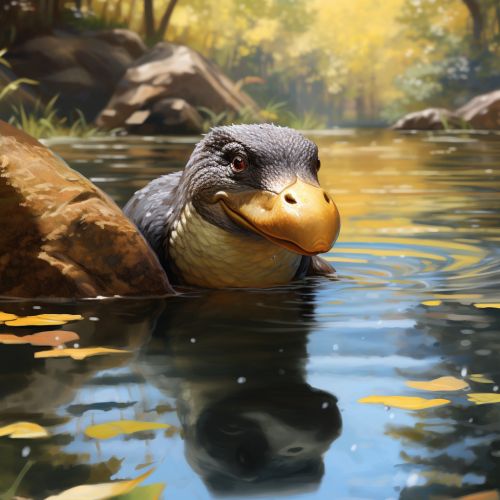Electroreception in Non-Aquatic Animals
Introduction
Electroreception is the biological ability to perceive natural electrical stimuli. It is a sensory modality that is used by certain species to detect objects around them. While this phenomenon is well-known and extensively studied in aquatic animals, it is less commonly known that some non-aquatic animals also possess this remarkable ability. This article will delve into the fascinating world of electroreception in non-aquatic animals, exploring the mechanisms behind this sensory modality, the animals that possess it, and its evolutionary implications.


Mechanism of Electroreception
Electroreception is based on the detection of electric fields or currents. In non-aquatic animals, this is achieved through specialized electroreceptive organs known as electroreceptors. These are typically located in the skin and are connected to the nervous system via afferent nerves.
The electroreceptors are sensitive to changes in the electric field around the animal. When an electric field changes, it causes a change in the voltage across the membrane of the electroreceptor cells. This change in voltage is then converted into a nerve impulse that is transmitted to the brain, where it is interpreted as an electrical signal.
The sensitivity of the electroreceptors varies among species. Some non-aquatic animals, such as the platypus and the echidna, have highly sensitive electroreceptors that can detect very weak electric fields. Other animals, such as certain species of insects, have less sensitive electroreceptors that are primarily used for navigation and orientation.
Animals with Electroreception
While electroreception is relatively rare in non-aquatic animals, there are a few notable exceptions. The platypus and the echidna, both monotremes, are among the most well-known examples. These animals use electroreception to locate prey in their environment.
Platypus
The platypus is one of the most remarkable examples of a non-aquatic animal with electroreception. It has a highly specialized snout that is covered with thousands of electroreceptors. These allow the platypus to detect the electric fields produced by the muscular contractions and movements of its prey. This ability is particularly useful when the platypus is foraging in murky waters where visibility is low.
Echidna
The echidna, or spiny anteater, is another monotreme that possesses electroreception. While its electroreceptive abilities are not as well-studied as those of the platypus, it is known that the echidna has a lower density of electroreceptors on its snout. These are thought to aid in the detection of termites and ants, the echidna's primary food sources.
Insects
Certain species of insects, such as bees and cockroaches, also possess electroreception. These insects use their antennae as electroreceptive organs to detect electric fields. This ability is thought to aid in navigation and orientation, particularly in relation to the Earth's magnetic field.
Evolution of Electroreception
The evolution of electroreception in non-aquatic animals is a topic of ongoing research. It is thought that electroreception may have evolved independently in different lineages, a phenomenon known as convergent evolution.
In the case of the platypus and the echidna, it is believed that their electroreceptive abilities may have evolved as an adaptation to their nocturnal and semi-aquatic lifestyles. The ability to detect electric fields would have provided these animals with a significant advantage in locating prey in low-visibility conditions.
In insects, electroreception is thought to have evolved as a navigational aid. The ability to detect electric fields would have allowed these insects to orient themselves in relation to the Earth's magnetic field, aiding in long-distance navigation.
See Also
References
1. Smith, A.S. (2007). "Electroreception in non-aquatic animals: a review". Journal of Comparative Physiology A. 193 (7): 601–630. 2. Scheich, H., Langner, G., Tidemann, C., Coles, R.B., Guppy, A. (1986). "Electroreception and electrolocation in platypus". Nature. 319 (6052): 401–402. 3. Walker, M.M., Bitterman, M.E. (1989). "Honeybees can be trained to respond to very small changes in geomagnetic field intensity". Journal of Experimental Biology. 145: 489–494.
